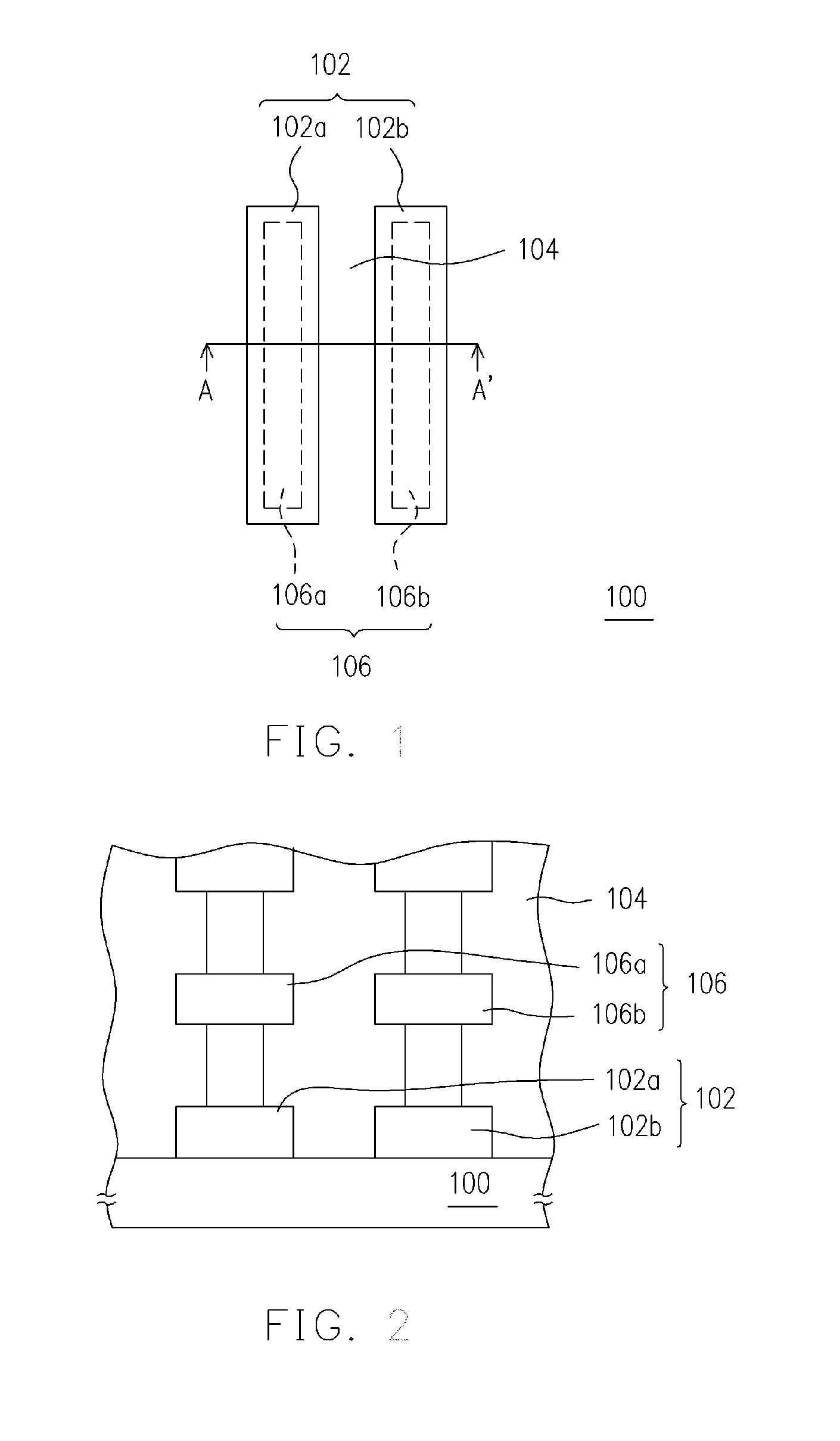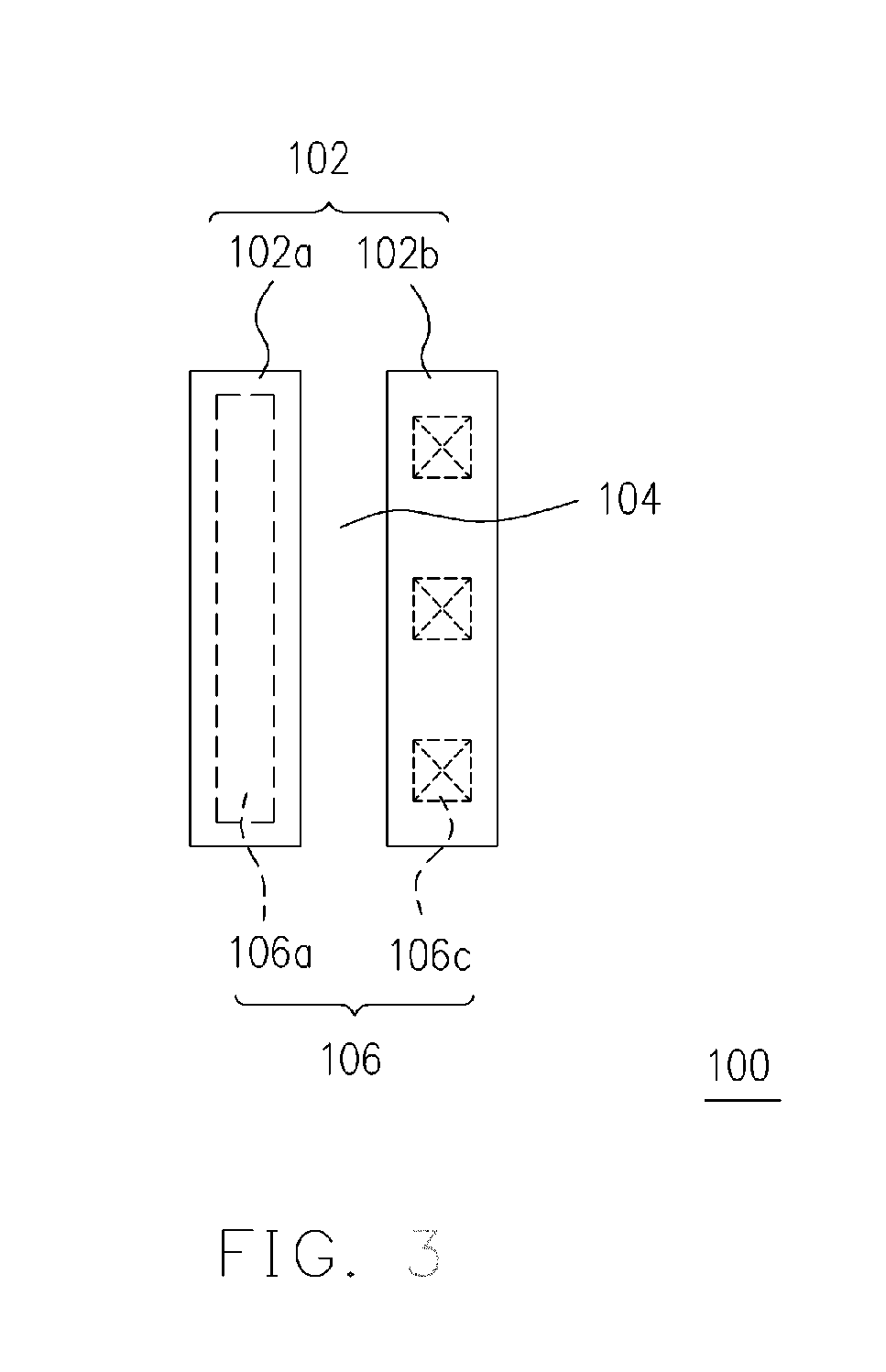Capacitor structure
- Summary
- Abstract
- Description
- Claims
- Application Information
AI Technical Summary
Benefits of technology
Problems solved by technology
Method used
Image
Examples
Embodiment Construction
[0041]FIG. 1 is a top view of a capacitor structure according to an embodiment of the present invention. FIG. 2 is a profile view of the capacitor structure cut along line A-A′ in FIG. 1. FIG. 3 is a top view of a capacitor structure according to another embodiment of the present invention.
[0042] First, referring to FIG. 1 and FIG. 2, the capacitor structure includes a plurality of conductive layers 102, a dielectric layer 104, and a plurality of contacts 106 disposed on a substrate 100. The substrate 100 is, for example, a silicon substrate.
[0043] The conductive layers 102 are stacked, and each conductive layer 102 has a conductive pattern 102a and a conductive pattern 102b. The material of the conductive layers 102 is conductive material such as metal. Here, the plurality of the conductive layers 102 means that at least 2 layers are included. For those of ordinary skill in the art, the number of the conductive layers 102 can be adjusted according to the requirement in IC design....
PUM
 Login to View More
Login to View More Abstract
Description
Claims
Application Information
 Login to View More
Login to View More - R&D
- Intellectual Property
- Life Sciences
- Materials
- Tech Scout
- Unparalleled Data Quality
- Higher Quality Content
- 60% Fewer Hallucinations
Browse by: Latest US Patents, China's latest patents, Technical Efficacy Thesaurus, Application Domain, Technology Topic, Popular Technical Reports.
© 2025 PatSnap. All rights reserved.Legal|Privacy policy|Modern Slavery Act Transparency Statement|Sitemap|About US| Contact US: help@patsnap.com



